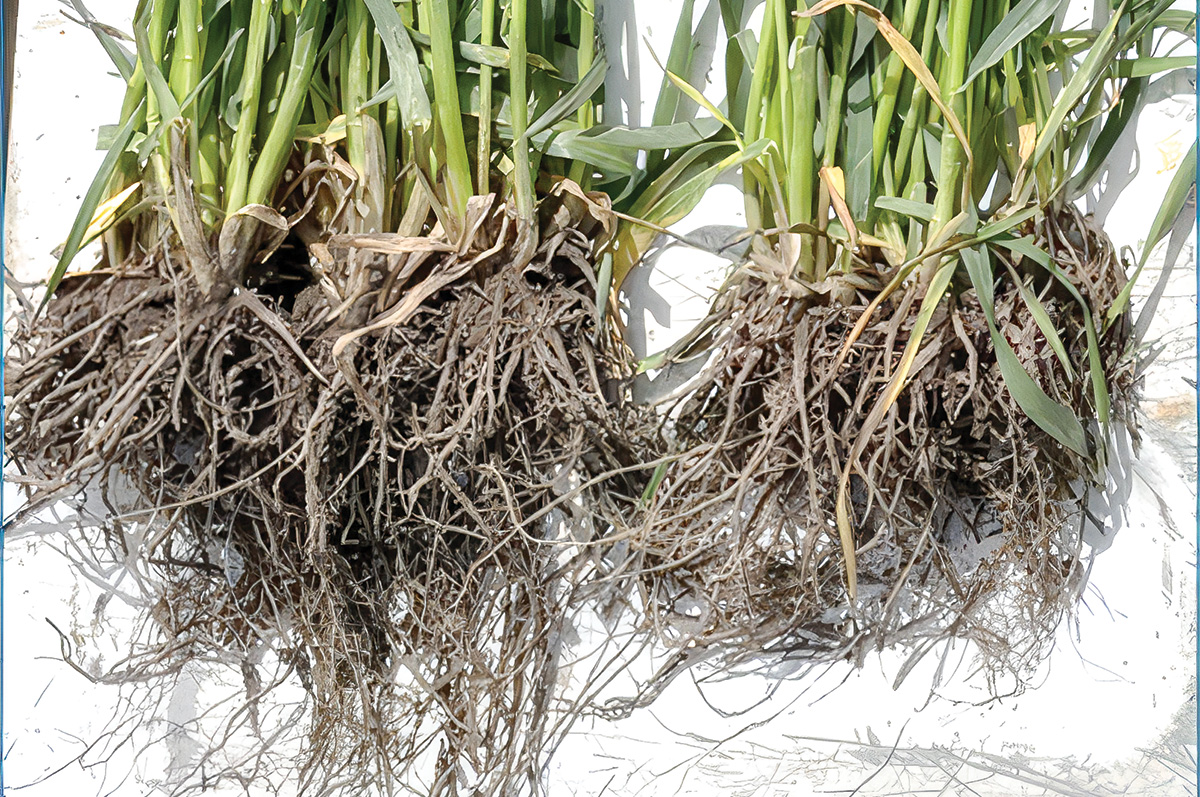Wheat growers in Idaho are losing a surprising 3.5 to 4 bushels per acre every year due to widespread zinc deficiency that results in slow emergence and a lack of seedling vigor. While most now recognize that zinc is widely deficient in the soil profile, the larger issue of how to solve it still remains. This is an issue a lot of growers are not focusing time on, as they have bigger decisions they need to make.
When it comes to zinc availability in the soil, pH and temperature at planting can significantly hinder the seed’s ability to access adequate levels of zinc. Cooler soil temperatures in early spring planting, or under-irrigation, will limit zinc availability. Similarly, soil profiles with a pH of 7.5 or higher will also see significantly reduced levels of available zinc.
As the main component in the plant growth hormone auxin, zinc is not only critical for plant health early in the plant’s life – it is required to initiate and stimulate germination. Think of zinc as a forklift moving sugars to the plant embryo. Without access to zinc at the time of germination, sugars can’t cross the membrane layers to the embryo. The consequence of this is weakened stands and slower emergence.
Roughly 70% of the zinc required by cereal grains is demanded within the first 30 days of life. The best solution to zinc deficiency, therefore, lies in giving the plant immediate access to zinc at the time of germination. Without supplying the micronutrient needs at germination, even the best varieties will struggle to reach their full yield potential.
But not all zinc products are created equal when it comes to delivering performance as a seed treatment. The most common forms – zinc EDTA, zinc oxide and zinc sulfate – each impact the plant differently. Undeniably, research shows that the slow-release nature of an EDTA-chelated nutrient is not the appropriate tool to meet this large early demand. EDTA-chelated nutrients are designed to be accessible in small amounts over the growing season and cannot supply a large peak demand such as germination needs.

Courtesy photo.
Instead, recent research points to zinc oxide as the superior seed-applied nutrition source. Research has taken this a step further and tested a new process of micronizing this zinc oxide, a process they termed MicroFuze, which delivers zinc oxide particles at such an advanced level that the nutrient accessibility is significantly enhanced. These micronized particles are in a tolerance of 0.05 to 0.1 microns. If you think of the thickness of a hair follicle, it is about 100 microns, for reference. Immediate access to zinc at the time of germination promotes rapid emergence and root development, which leads to earlier access to the additional nutrient package placed below ground and gives the plant a one-two punch at nutrient availability.
With the current landscape of commodity prices and input costs, it is more important than ever for growers to focus on early stand establishment to achieve maximum yield. Better stand establishment in the fall leads to more efficient use of fertilizer and better water retention in the soil profile. With high fertilizer costs and ongoing drought conditions, these are two of the most pressing issues in our region. As we start evaluating seed varieties and seed treatment offerings for fall planting, we need to make sure we are giving the seed the best chance of survival, and that is why zinc is an important part of the seed treatment package.
Not all zinc products are designed to deliver performance on the seed piece, and choosing the right zinc product to accomplish this task is critical.




.jpg?t=1687979285&width=640)



